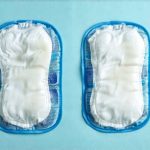Kidney stones are notorious for causing some of the most intense pain a person can experience. Often described as excruciating, sharp, and radiating from the back and side, this pain can be debilitating and send individuals scrambling for immediate relief. While seeking professional medical attention is always paramount when suspecting a kidney stone, many people understandably look for ways to manage the discomfort while awaiting diagnosis or treatment. This leads to questions about home remedies, and one frequently asked question is whether using a heating pad can provide any benefit during this painful ordeal. Understanding the nuances of kidney stone pain and how heat interacts with the body is crucial before reaching for that familiar source of warmth.
The reality is that managing kidney stone pain is complex. It’s not simply about masking the discomfort; it’s about understanding the underlying cause, supporting the body’s natural healing processes, and avoiding interventions that could potentially worsen the situation. While a heating pad might seem like an intuitive solution – after all, heat often soothes muscle aches and pains – its application to kidney stone pain requires careful consideration. This article will delve into the potential benefits, risks, and alternative strategies for managing this agonizing condition, emphasizing the importance of professional medical guidance throughout the process. It’s vital to remember that this information is not a substitute for advice from a qualified healthcare provider.
The Role of Heat in Pain Management
Heat therapy, in general, works by increasing blood flow to the affected area. This increased circulation can help relax muscles, reduce stiffness, and potentially alleviate some types of pain. For musculoskeletal discomfort – think sore backs or strained muscles – this is often incredibly effective. However, kidney stone pain differs significantly from these typical aches. It’s not primarily a muscular issue; it’s caused by the stone obstructing the urinary tract, triggering intense spasms and pressure. This fundamental difference is why the application of heat is more complex in this scenario.
The key consideration with kidney stones isn’t muscle relaxation so much as managing the severe ureteral spasms that accompany the stone’s passage. These spasms are what generate the majority of the pain, and they are often incredibly intense and wave-like. While heat might help to slightly ease associated muscle tension in the back or abdomen caused by guarding against the pain, it’s unlikely to directly address the source of the problem – the ureteral spasm itself. Additionally, applying heat too close to the kidneys can potentially alter blood flow patterns in a way that isn’t necessarily helpful and could even be detrimental during certain stages of stone passage.
It’s also important to distinguish between dry heat (like heating pads) and moist heat (like warm compresses). Dry heat can sometimes exacerbate dehydration, which is already a concern for individuals with kidney stones, as adequate hydration is essential for flushing the system and aiding in stone passage. Therefore, if considering any form of heat therapy, maintaining proper hydration levels becomes even more crucial.
Understanding Ureteral Spasms & Pain Pathways
The pain associated with kidney stones isn’t simply a localized sensation; it’s a complex interplay between nerve signals and physiological responses. When a kidney stone moves through the ureter (the tube connecting the kidney to the bladder), it causes irritation and inflammation, triggering powerful spasms in the ureteral muscle. These spasms are what generate the intense, colicky pain that characterizes kidney stone episodes. The nerves surrounding the kidneys and ureters detect these spasms and send signals to the brain, which interprets them as excruciating pain.
- These nerve signals aren’t always neatly contained; they can radiate to other areas, such as the groin, lower back, and even the abdomen.
- This radiating nature of the pain explains why it’s often difficult to pinpoint the exact location of the stone solely based on where the pain is felt.
- The body also responds to this intense pain by releasing stress hormones like adrenaline, which can further contribute to muscle tension and exacerbate the discomfort.
Therefore, effective pain management for kidney stones needs to address both the source of the spasms and the resulting physiological response. Heat, while potentially helpful for muscle relaxation in some cases, doesn’t directly target ureteral spasms or mitigate the release of stress hormones. More targeted interventions are typically required.
Is Heat Ever Appropriate? Timing and Placement Matters
While generally not a first-line treatment for kidney stone pain, heat might offer limited relief in specific circumstances – and only under guidance from a healthcare professional. For instance, if the primary complaint is significant muscle tension in the back secondary to guarding against the stone’s passage, a low setting heating pad applied to the lower back might provide some comfort. However, it should never be applied directly over the kidney area itself.
- Low Setting: Always use the lowest possible heat setting to avoid burns or overheating.
- Short Intervals: Limit application to short intervals (15-20 minutes) with breaks in between.
- Hydration: Drink plenty of water before, during and after applying heat.
It’s crucial to emphasize that this is not a replacement for medical care. If the pain intensifies or doesn’t improve, seeking immediate medical attention remains paramount. Furthermore, individuals with certain medical conditions – such as diabetes, peripheral neuropathy, or impaired sensation – should avoid using heating pads altogether without consulting their doctor. These conditions can increase the risk of burns and complications.
Alternative Pain Management Strategies
Given the limitations of heat therapy for kidney stone pain, what other options are available? The most effective strategies typically involve medical intervention, but there are also supportive measures individuals can take while awaiting treatment or managing milder episodes.
- Medication: Doctors commonly prescribe NSAIDs (non-steroidal anti-inflammatory drugs) to reduce inflammation and alleviate pain. In severe cases, opioid painkillers may be necessary, although their use is generally limited due to potential side effects and the risk of dependence.
- Hydration: Drinking plenty of water helps flush out the urinary system and can aid in stone passage. Aim for at least 2-3 liters per day.
- Alpha-Blockers: These medications relax the muscles in the ureter, making it easier for the stone to pass.
- Strain Urine: Straining urine is recommended to capture any passed stones for analysis, helping doctors determine the best course of treatment and prevent future occurrences.
- Movement: Gentle movement can sometimes help facilitate stone passage, but avoid strenuous activity.
Ultimately, when it comes to kidney stone pain, proactive medical care is essential. Don’t hesitate to seek immediate attention if you suspect you have a kidney stone or are experiencing severe pain. Relying solely on home remedies without professional guidance could delay diagnosis and potentially lead to complications. A healthcare provider can accurately diagnose the condition, determine the size and location of the stone, and recommend the most appropriate treatment plan for your specific situation.





















